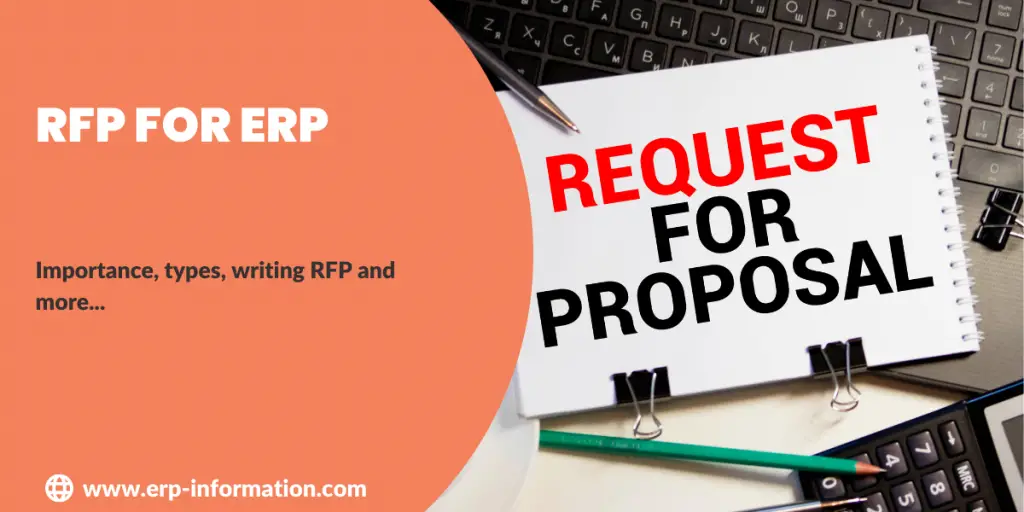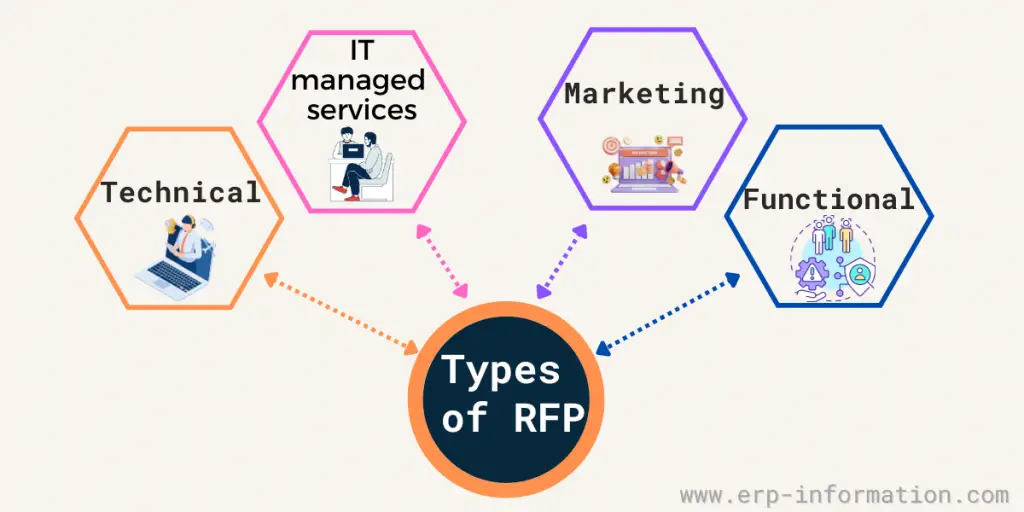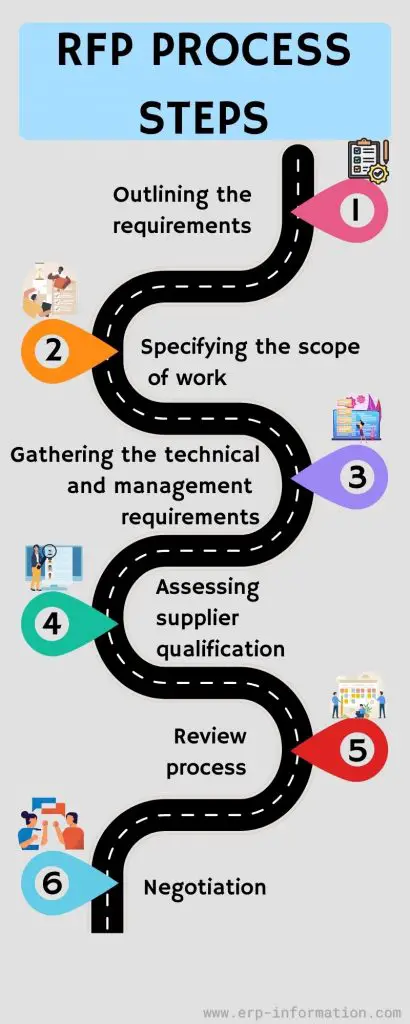If you are in search of a new ERP system, creating a compelling Request For Proposal (RFP) might seem overwhelming at first. But don’t worry, with the right guidance, it’s a task that can be accomplished.
Choosing the perfect ERP system for your business is a worthwhile endeavor. It requires dedicating time and attention to ensure that the solution you choose aligns well with your organization’s needs and goals.
So, get ready to equip yourself with the knowledge and tools to write an RFP that leads you to discover the best ERP system for your business.
In this blog, we will see the importance of an RFP for ERP systems, its types, and how to write one that will help you find the best system for your business. We’ll also provide a few tips on how to make your proposal stand out from the competition! Finally benefits of using a consultant to help with your RFP with its sample template.
What is the RFP?
Request For Proposal(RFP) is a form businesses use to solicit proposals from vendors. It outlines the project’s requirements and provides a general overview of the company’s needs.
RFPs are standard in many industries but significant when choosing an ERP system. In addition, ERP systems are complex and expensive, so choosing the right vendor is essential.
Why do you need an RFP for ERP systems?
There are several benefits to issuing an RFP for an ERP system.
- Most importantly, it allows you to clearly understand the capabilities of different vendors and compare them side-by-side.
- This process can also help you negotiate better terms with vendors and ensure you get the best possible value for your money.
- Additionally, going through the RFP process can give you a better sense of the timeline and costs associated with implementing an ERP system.
- Finally, issuing an RFP can show that your organization is serious about selecting the right ERP solution and is willing to invest the time and resources necessary to make a well-informed decision.
Types of RFP
Request for proposal can typically be categorized as one of the following types:
- Technical – This type of RFP solicits proposals for a specific technology-based product or service.
- Functional – A functional RFP asks proposers to submit a plan outlining how they would meet the needs and goals of the requesting organization, regardless of the proposed solution’s technical specifications.
- IT managed services – This type of RFP is generally used by organizations seeking to outsource all or some of their IT infrastructure and operations.
- Marketing/branding – A marketing or branding RFP often asks proposers to submit ideas and strategies for developing or improving a brand’s image.
RFP Process Steps
1. Outlining the requirements
When writing an RFP for an ERP system, there are vital things to remember. Firstly ensure to outline the project’s requirements clearly.
This will help you create a list of must-have features and functionality your new system must have. Once you have the list, you can start developing the RFP itself.
Be sure to include things like:
- The business’s size and industry
- The current state of the business’s IT infrastructure
- The business’ budget for the project
- The timeframe for the project
- The goals of the project
- The features and functions that are required in the ERP system
- Any special requirements or customization that is needed
2. Specifying the scope of work
Subsequently, be clear about the scope of the work. Do specify what tasks the ERP system will be responsible for, the expected results, and what tasks will be outside its scope.
This is vital so you don’t want to end up with a system that doesn’t do what you need.
3. Gathering the technical and management requirements
In addition to general information about your company, you’ll also need to include technical and management requirements in your RFP.
That includes specifying the hardware and software requirements of the system, as well as any required integrations. You’ll also want to detail the management processes used to maintain and operate the system.
4. Assessing supplier qualification
Another critical element of an RFP is supplier qualification requirements. That includes specifying the criteria vendors must meet to be considered for the project. That can include things like financial stability, experience, and references.
5. Review process
a. Questions for potential vendors
Finally, ensure you include a questionnaire for the potential vendors. This will help you narrow down the field and determine the right ERP system for your business. Some common questions to ask include:
- What is the total cost of ownership?
- How long will it take to implement the system?
- What kind of training and support is available?
- What are the system’s key features and benefits?
- How easy is it to use?
- Can the system be customized to meet our specific needs?
b. Automating the review process
While choosing and implementing a new ERP system, automating the review process of vendor proposals using the software can be highly beneficial.
By automating the review process, you can eliminate the need for manual data entry, which can help speed up the process.
Additionally, automated reviews can help ensure that all proposals are reviewed consistently, which can help avoid any bias from the decision-maker.
6. Negotiation
Once you’ve selected a vendor, it’s time to start the negotiation process. That is your opportunity to get the best price and terms for your new system.
If you follow these tips, you’ll be well on writing a winning RFP for your ERP system.
The benefits of using a consultant to help with your RFP
There are vital benefits to using a consultant to help with your RFP.
- They can provide valuable insight and expertise that you may not have.
- They can help save you time by taking care of your RFP process.
- They can help you get your new system’s best price and terms.
Check for references and their credentials if you are considering using a consultant to help with your RFP.
Sample RFP for ERP template
Below is an ERP RFP template you can use when writing your RFP. Be sure to adapt it to your specific requirements.
[Company Name] is seeking proposals for an ERP system. The selected vendor is responsible for providing a system that meets the company’s needs. We are looking for a system that is easy to use and can be customized to meet specific needs.
| 1. Company Information | Company Name Phone Number E-mail Address Address Website |
| 2. Background | Provide a brief overview of your organization, including information on its history, size, and products or services. |
| 3. Project Overview | Give an overview of the project, including the objectives, scope, and timeline. |
| 4. Requirements | Include a list of requirements for the system, including any specific features or functionality you are looking for. |
| 5. Evaluation Criteria | Include a list of criteria for evaluating proposals, such as cost, experience, and references. |
| 6. Questions | Include a list of questions you want vendors to answer in their proposals. |
| 7. Submission Instructions | Provide instructions on submitting a proposal, including the deadline and contact information. |
| 8. Date | Begin date, submission date. |
Pros and cons of RFP for ERP
Pros
- Using RFPs can streamline your search process, saving time that would otherwise be spent scouring numerous software provider websites. Instead, you communicate directly with vendors, detailing your specific requirements.
- An ERP RFP facilitates a clear understanding of your company’s essential features. This includes identifying necessities such as CRM, manufacturing, and inventory tools crucial for both production and customer management. Additionally, you can request specialized modules like demand forecasting, shipping, quality management, and planning and scheduling.
Cons
- Developing RFPs demands an investment of both time and money. Employing an ERP consultant can aid in vendor selection, drawing from their expertise. However, this still requires a significant time commitment and incurs expenses.
- It’s important to note that some ERP consultants might recommend software solutions that don’t align with your needs. Careful consideration is crucial to avoid investing in software that isn’t suitable for your specific requirements.
FAQs
What are the guidelines for RFP for ERP?
When it comes to ERP software, there is no one-size-fits-all solution. The best way to get the right system for your business is to issue a request for proposal (RFP) and evaluate the responses from various vendors.
To create an effective RFP, you need to have a clear understanding of your business needs. Once you know what you need, you can develop your RFP document. Include specific details about your requirements and leave room for vendors to propose creative solutions.
What are RFQ and RFI?
RFQ stands for Request For Quote, and RFQs are sent out by buyers to potential suppliers to get pricing quotes for products or services.
RFI stands for Request For Information, and RFI’s are sent out by buyers to potential suppliers to collect information about what products or services might be able to supply. RFIs are less detailed than RFPs and are often used during the earlier stages of a project when companies are still determining their needs.
Why is it crucial to customize an ERP RFP for specific business needs?
Customizing your ERP RFP is essential because it ensures that the proposals you receive from vendors are tailored to your unique requirements.
A one-size-fits-all RFP might result in generic responses that don’t address your specific challenges or goals. By customizing, you signal to vendors that you’re serious about finding a solution that aligns precisely with your business needs.
What are the key elements to include in an ERP RFP template for optimal results?
Developing a robust ERP RFP template is crucial. It should include clear sections for your business requirements, technical specifications, evaluation criteria, and timelines. Additionally, consider including sections on your organization’s goals, budget constraints, and data migration requirements.
By providing comprehensive information in your template, you enable vendors to submit more accurate and relevant proposals, saving time and effort in the evaluation process.
Conclusion
When writing your RFP for ERP, it’s essential to tailor it to your needs. Be sure to include a list of requirements, evaluation criteria, and questions for potential vendors. The negotiation process is also an essential part of the RFP process.
Be prepared to negotiate terms and pricing with the vendor you select. By following these tips, you’ll be well to finding the right ERP system for your business.
As you can see, a lot goes into writing a winning RFP for ERP system. But if you spend the time to do it right, you’ll find the perfect system for your business.
Reference


